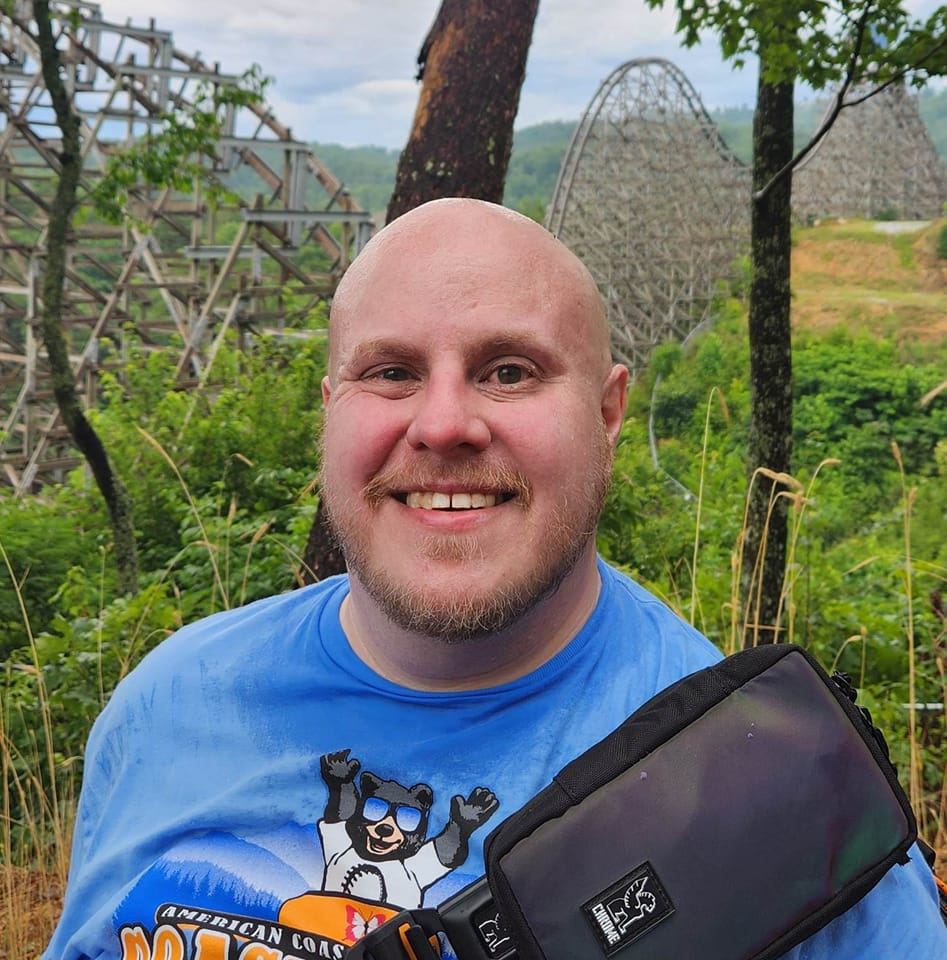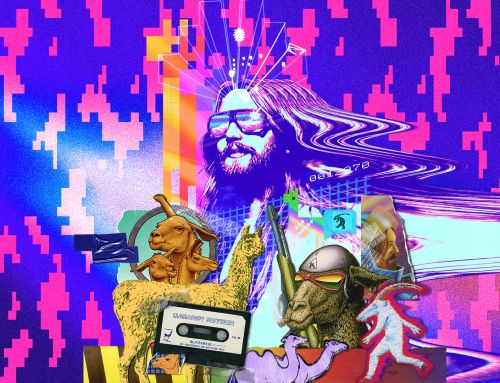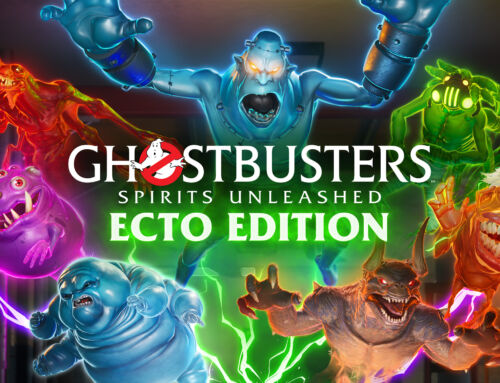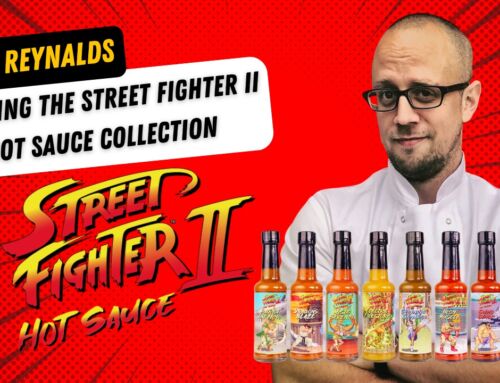In the ever-evolving landscape of the gaming industry, there exist individuals whose unwavering passion, creativity, and determination propel them to craft unique and innovative gaming experiences. Josh Hughes, a seasoned game developer with a remarkable 17-year tenure at Add-A-Tudez Entertainment, is undeniably one of those individuals. In this exclusive interview, we delve into his intriguing journey, his groundbreaking projects, Burst! and Shattered Soul, his dedication to teaching game design to aspiring young creators, and the profound impact of gaming on his life and career. Join us as we explore the extraordinary world of Josh Hughes, where the boundaries of gaming are continually pushed, and where dreams become a remarkable reality.
Q: Can you tell us more about Burst! and its unique connection to the Montana Film Office’s Big Sky Film Grant? What inspired the concept for this music game?
A: Absolutely! Burst! is the first-ever video game to be supported by the Montana Film Office with a Big Sky Film Grant. It involves a Bird of Paradise named BOP, who owns a firework stand. He hires you as his friend to put on firework shows to increase the popularity of his stand. You can see a video on BOP’s creation at [BOP Creation Video](https://youtu.be/FDsvZ3afsbM?si=4737KHRdy0M4Xvv8).
The gameplay is basically ‘Guitar Hero in the Sky’, and has players blowing up fireworks to the beat while swapping out elements from the Periodic Table to change the explosion colors. You can see a video of our prototype at [Prototype Video](https://youtu.be/AwLk2Krd3WI?si=Bxj0jf0ddAonZziS), please note a lot of the art isn’t final! Don’t forget to watch to the 1:09 mark to see our mechanic where players can spin the whole environment while unleashing a flurry of fireworks!
The initial idea for the game came from 2011, when I won a grant from HASTAC (Humanities, Arts, Science and Technology Advanced Collaboratory) and The MacArthur Foundation. That grant was to make an educational theme park inside of LittleBigPlanet that taught STEAM (Science, Technology, Engineering, Art and Math) to kids by using the rides as physics experiments. I’m a nut for rides and roller coasters (proud card carrying member of American Coaster Enthusiasts!!), so it was a blast to make!
In the process of working on that, we realized many studios thought you were 1 of two things: either you were an educational studio (and didn’t make fun games at all), or you were a ‘normal’ studio and didn’t touch STEAM content with a 10 foot pole. We wanted to challenge that by making a game that was meant for people to play in their own fun time, but also happened to have accurate STEAM content as part of the game design. Thankfully, we’re not the only studio tackling that problem.
If people want to wishlist Burst! on STEAM (the PC platform, not the educational acronym haha!), they can do so at [Burst! on STEAM](https://store.steampowered.com/app/2111480/Burst/). We’re uploading videos to that STEAM page as well chronicling our development journey (including a music performance by MTV Video Music Award winning Native American rapper, Supaman, who is featured in the game)!
Q: Shattered Soul seems like an exciting project. What can you share about the inspiration behind this fighting game, and what sets it apart from other titles in the genre?
A: Shattered Soul has been mine and Trev’s (my brother and co-founder, along with our Mom Cyndi) dream project for literally decades now! It’s a throwback to 90’s style 3D fighting games (think like Battle Arena Toshinden, Power Stone, Ehrgeiz, Bloody Roar and more) mixed with deep lore-based storytelling.
Our family lost everything in 2002 when Trev (7th grade at the time) was diagnosed with kidney failure and we became a medical bankruptcy family. We lost everything and had to move in with Mom’s parents. It was a long haul (Trev now has dialysis 3 times a week, and is awaiting further development of University of California’s Bionic Kidney that would make it so he doesn’t have to get a transplant), and Trev and I dreamed about our dream fighting game (which became Shattered Soul) as a way to dream of a future.
Eventually, one day Trev was in one of his surgeries (we stopped counting at 70 surgeries) and Mom and I were in the waiting room. I told her the ‘normal’ way people do things wasn’t working for us, so we had to try crazy. That meant taking our love of video games and turning it into a job. A woman at our local Small Business Development Center found out and told us that, if we were serious, she’d teach us how to be entrepreneurs. That started a long road that has so far included us becoming Montana’s 1st PlayStation and Xbox certified game development team, the first Montana company to go to E3 and the first Montana company to go to Tokyo Game Show.
So, we started the long journey of making Shattered Soul real! This started by making a really cool team that we’re very proud of! Then, we spent years making an ultra-rough prototype in Unity you can see at [Prototype Video](https://youtu.be/zcCEphqr6ys?si=7cIx4Jf1FOw8JPkg).
The whole idea of Shattered Soul is ‘if you can see it, you can fight on it’ and the control scheme allows for players to fight on -and jump on- anything in the environment, including moving objects like a ferris wheel or dangerous areas like cars in traffic. We used the rough prototype to get feedback from players what they did and didn’t like, and we’re now working on a new prototype in Unreal 5 using industry-quality assets and animations.
One such example of the industry-quality work is at [Character Video](https://youtu.be/LPoQ95D1bMU?si=I_cpEYWg9TNlkLdc), and shows our commitment to representing people well. This video is about our character, Kai, who is inspired by Pacific Islander culture. Since none of us on team are Pacific Islander, we got input from Sky Kauweloa (Director of Esports at University of Hawaii) and Pacific Islander artist UrbanNesian to make sure Kai’s portrayal was honoring the culture (not appropriating it).
We want people traditionally gatekept out of the industry to feel included both behind the scenes at our studio as well as on-screen, so this process of listening and learning was important to us. I’m also very proud of our diverse team and the different points of view they have brought to the project, it has grown so much since those early days of Trev and I dreaming up our dream fighting game! It has become so much more inclusive and wider than we ever imagined, and I’m so proud of our team for that!
We intentionally are designing the controls to be easy to pick up, but hard to master (using less than half a controller’s buttons), and it’s been great to hear from early play testers things like, “I don’t normally play fighting games, but this is the kind of fighting game I could get into!” We’re aiming Shattered Soul at these kinds of people (who normally feel intimidated or gate kept out of the genre), and hope it’s their gateway drug into fighters! We’re also talking with pro fighting game players in the Montana Fighting Game Community to make sure we’re appealing to them as well.
We also have involvement from cool people like Chris Casamassa, a world famous martial artist most well known for playing Scorpion in the 90’s Mortal Kombat movie! It’s just been an adrenaline rush to see how much this game has grown!
Q: Teaching game design classes to kids is a noble endeavor. Could
you share a memorable moment or experience from one of these classes that left a lasting impact on you or the young game designers?
A: When we got looped into educational stuff with the LittleBigPlanet pack for HASTAC, we realized that there was a huge need here. So, we started doing talks to schools and community groups both in person and online via groups like ConnectedNorth and CILC (Center for Interactive Learning and Collaboration). We do game design camps this way as well, and our talks focus on things like jobs in the industry, math in the industry and the importance of things like soft skills such as dignity, respect and inclusion. Sony PlayStation did a video on our outreach at [PlayStation Video](https://youtu.be/SWzv7XMZiSE?si=6y9Rrld5nx3buPf0), and as of 2023 our outreach has also added Fortnite Creative to the mix. People can go to our site at [Educational Outreach](www.teamkaizengames.com/educational-outreach) to learn more and see video tutorials for both LittleBigPlanet and Fortnite Creative!
As for an impactful moment: we once had a student in our 2nd year who was a ‘class clown’ and goofed off. Once we got to know him, we realized this was a facade for his high anxiety, and he was always afraid of breaking stuff. Once we showed him that, in game design, you can undo mistakes and learn from them (with LittleBigPlanet’s rewind button), he ended up blossoming and becoming a life long friend. He almost bombed out of high school, but then remembered what he learned in LittleBigPlanet. He then sat down with his counselor and Principal, came up with a plan and graduated 6 months ahead of his peers. He went on to the Air National Guard and was the top of his class for being a Helicopter Mechanic, and is currently in California teaching other such mechanics!
For a funny story: we have a programmer now who started as one of our LittleBigPlanet Club kids. One time, when he was in high school, he was helping us run a game design camp. Someone brought up the topic of Captain Planet, and this guy looks at us with wide eyes and exclaims, “WAIT, CAPTAIN PLANET WAS REAL!?!?!?!”
Trev and I looked at him and said, “Yeah, he was a cartoon during our childhood…,” and our programmer exclaimed, “I thought Captain Planet was a joke Don Cheadle made up for the internet!!!!” We thanked him for making us feel old LOL!
Q: With over 17 years at Add-A-Tudez Entertainment, what are some of the most significant milestones or achievements you’ve reached during your tenure as President?
A: We became the 1st Montana company to go to E3 and Tokyo Game Show on our own credentials, to become Xbox and PlayStation Certified and also the first video game (Burst!) to win a Big Sky Film Grant. We also have done cool educational projects with schools as well as groups like Sony Mobile Canada (who had us make educational LittleBigPlanet levels to teach their reps about their new phones). We also, just this year, had a cool experience where kids in our game design camp got to have a Zoom call with a NASA engineer and learn about how video games, engineering and space travel are all related!
A lot of people around here now know us as ‘the video game guys’, and it’s sometimes surreal to remember that! We kind of view ourselves as bringing a bit of the game industry to Montana and a bit of Montana to the game industry!
Q: As a veteran in the industry, what advice would you give to aspiring game developers who are just starting their careers?
A: Find what you’re good in, and I bet you can find a way to tie it to games! Also, many people dream of working at the bigger publishers, but don’t sleep on opportunities at smaller publishers and studios. You’ll often end up working on more interesting projects that way!
Q: Are there any particular challenges you’ve faced in your journey as a game developer that stand out to you, and how did you overcome them?
A: As a medical bankruptcy family, we’re often told ‘no’ when it comes to funding due to having almost no assets and poor credit. So, we have had to do a lot on our own via sweat equity. It’s also been interesting because we’re in a non-traditional game design state, so a lot of grants and programs states offer game studios weren’t here yet (thus why Burst! is the first ever to win the Montana Film Office’s Big Sky Film Grant). We’re hoping we can help be a part of the change there both in Montana as well as other non-traditional game development places!
Q: Can you share a favorite gaming moment or memory from your personal gaming experiences that has had a lasting influence on your work?
A: Aerith’s death in FF7, hands down. I remember crying my eyes out as a middle schooler and being shocked at how a fantasy story had such a real impact on human emotion. It was then I realized I wanted to be a writer for video games!
Q: What role does music play in the development of Burst!? How do you choose the music that complements the gameplay experience?
A: We want to cast a wide net in the music we get for Burst! so we can expose players all sorts of artists! Basically, it needs to be up-tempo and easy to do a firework show to as players will be blowing up fireworks to it. So, basically, music and fireworks are the star! We have a cool cross section already, including Supaman (MTV Video Music Award winning Native American rapper), Wiyaala (Ghana-based Afro-Pop performer), Quaff (Japanese ‘Samurai Rock’ band that mixes rock and Kabuki theater), Prima Nocta (Belgian based ‘medieval rock’ band that uses traditional instruments such as bagpipes)! We’re always looking for more too!
Q: Shattered Soul is a fighting game. Are there any specific martial arts or combat styles that inspired the game’s character designs or fighting mechanics?
A: The big thing is mixing a wide freedom of movement with over-the-top combat. So, we’re taking inspiration from real world martial arts, but cranking the fantasy side of it to 11. For instance, one of our fighters has strike plates on the fingers of her gloves so she can snap her finger and create sparks. She uses these sparks to light fireworks, and then throws them at her opponent. Another one of our fighters has water arms he can form into any weapon he desires.
We do have input from real world martial artists like Chris Casamassa too!
Q: The video by Sony showcasing your game design classes is intriguing. What prompted you to start teaching game design, and what do you hope the students take away from your classes?
A: Sorry kind of answered this already haha! But, basically, the thing is game design gave my family a way to overcome medical bankruptcy. It’s literally life giving for us, and we want to pay that forward. There is so many people who are told they were ‘born the wrong person’ or ‘born in the wrong place’ for game design and computer science, and we want to be a part of breaking that lie. So, while we work with all kids, we heavily target traditional
tech under-served such as girls, rural, Tribal/Native American Reservation, minority, low/moderate income, disability and special needs such as Autism Spectrum. It’s been really cool to see how kids, their teachers and parents have responded it to it! We have had parents say that game design gave their kid a way to express themselves and be a leader, where normally they would’ve just had to accept being an outcast–and that is so refreshing to someone like me who was definitely that outcast in school!
Q: In the ever-evolving gaming industry, how do you stay creative and innovative when working on new projects like Burst! and Shattered Soul?
A: Single biggest thing is don’t chase trends, instead make the game YOU want to PLAY! If you’re trying to be the next ‘X Big Game’, then you’re likely going to drown in a sea of fellow people trying to beat that game, and at best will likely come off as a shadow of what that game is since it’s been around longer and likely has more funding/marketing than you.
If you make the game you want to play, then you’ll stand out by not being in the crowd. If you add to that a willingness to listen to others (especially gamers from backgrounds typically gate kept out of the industry), you can refine your idea to the point where it’s very compelling to a wide range of people AND not like anything else out there.
I also recommend playing a wide range of games, especially from the indie space. Even if you never make a game like the ones you play, playing oddball games will help remind you how limitless this artform truly is and how high impact experiences can be made in small ways! For instance, one game I’m having a blast with right now is Justice Sucks, which is a game where you’re a Roomba-like robot vacuum trying to ward off home intruders. I doubt I’ll ever make a stealth game like it, but it doesn’t change the fact that it’s one of those games that can help you remember why you play games in the first place!
Q: Lastly, as a gamer yourself, what’s your all-time favorite video game and favorite game genre? How have these preferences influenced your work in game development?
A: My two favorite genres are fighting games and certain JRPGs like FF7, Persona 5 and FF10. I took a 3 month Tae-Kwon-Do mini class as a kid, and shortly thereafter played Street Fighter 2 at a friend’s house. It blew my mind to see how the real things I was learning were cranked to 11 for a fantasy, and that started my journey. Then, as I cried my eyes out to my favorite game of all time (FF7), I realized that story and lore were important parts too.
That cemented it for me, and I knew I’d someday want to make a lore driven fighting game. I truly think this medium is one of the best story telling vehicles mankind has ever come up with, and middle school me would be hyperventilating if he knew where our crew is now. Every time I’m talking with our team on our Slack, I keep getting mystified and have to remind myself that this amazing crew of people is real and we’re really making crazy and fun things!
In conclusion, the world of game development is a vibrant and ever-evolving realm where creativity knows no bounds. As we’ve explored the insights and experiences of a seasoned game developer, it’s evident that passion, persistence, and a commitment to inclusivity are essential in this journey. Whether it’s crafting unique gaming experiences like Burst! or realizing a lifelong dream project like Shattered Soul, the possibilities in game development are limitless.
Teaching the art of game design to young minds and breaking down barriers for underrepresented groups in the industry are noble pursuits that continue to make a profound impact. As we look ahead, the future of gaming promises even more innovation and inspiration, all driven by the love for this art form.
So, whether you’re an aspiring game developer or a dedicated gamer, remember that your unique perspective and creativity have the power to shape the gaming world in remarkable ways. Embrace your favorite genres, stay true to your vision, and let your passion lead the way. The adventure in the world of gaming is boundless, and your journey has only just begun.









